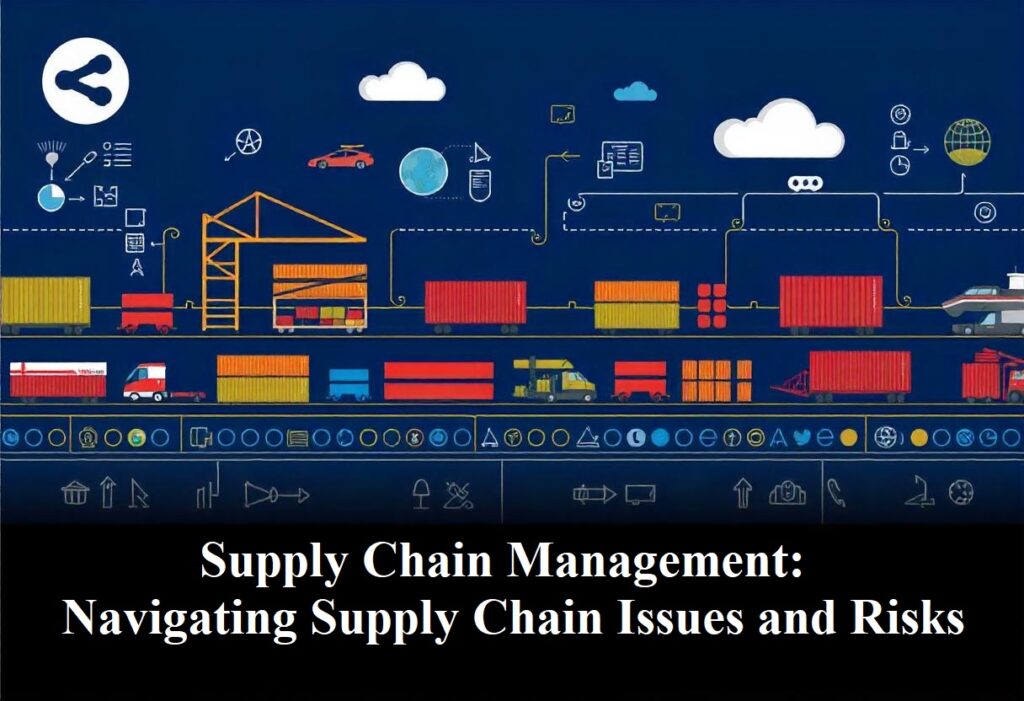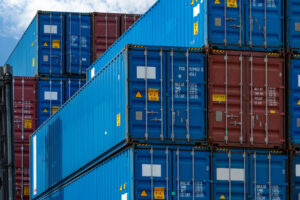
The world of supply chains is complex and made up of different components. Our team at Cedar Global Logistics, a top provider of international logistics and supply chain management solutions recognizes that supply chain management can be time and labour intensive.
Hence we have put together this article to help you understand issues and risks that can disrupt a supply chain and to assist you in choosing whether to manage it internally or outsource it to professionals.
In this blog post we breakdown what a supply chain is, what managing it entails and what the challenges that can affect it are. We’ll also give insight on how we navigate these risks and issues.
What is a Supply Chain?
A supply chain is a network of people, organisations, resources, and the activities they engage in to create and deliver a product or service to consumers.
It involves all the stages from the extraction, production, or procurement of raw materials, to the creation of a product by the manufacturer, to the delivery of the finished product to the end user.
In simpler words, a supply chain is the process involved in the flow of raw materials to manufacturers and the flow of goods from the manufacturer to the person who will use it.
The process involves various stages such as manufacturing, transportation, distribution and retail. Each stage involves different participants such as suppliers, manufacturers, distributors, retailers, and customers, all working together to ensure that products are produced, transported and delivered smoothly and on time.
What is Supply Chain Management?
Supply chain management is the coordination of the different activities involved in the creation and delivery of a product or service.
Key components of supply chain management
Key components of supply chain management and what they involve include:
Planning
This involves analyzing and interpreting market trends, forecasting demand, setting production schedules, and choosing what techniques and technology should be used in operations. All with the end goal of ensuring that the supply chain is effective and customers’ demands are met.
Sourcing
This involves choosing suppliers to provide necessary goods and services, negotiating contracts and managing relationships with suppliers to ensure a stable and reliable supply of materials or components.
Manufacturing or Production
This encompasses everything involved in the creation of the product. From the procurement of raw materials, to the production of goods from the obtained raw materials, to assembling of components.
Quality control is important to make sure the product does not fall below required standards.
Logistics, Transportation and Distribution
This involves managing the movement of goods from the production facility to warehouses and distribution centers and eventually to retailers and end users.
It includes choosing transportation methods, optimizing routes, tracking shipments and ensuring products are stored, handled and transported in a timely and cost-effective manner. Inventory levels have to be managed properly to avoid excess or insufficient stock.
Cedar Global Logistics offers comprehensive logistics, transportation and supply chain solutions on a global scale, to help you optimize your operations.
Returning
Goods might be returned for a variety of reasons. Goods are returned when the customer has a change of mind or does not want the product again. It also happens if the product has defects.
Thus, there must be a process for easily receiving returned goods and then deciding if the product should be fixed, scrapped or returned to shelf to be distributed again.
Supply Chain Issues and Risks
We’ve explored what supply chains are and what supply chain management entails, now let’s explore the various challenges that can disrupt the flow of products from manufacturers to consumers.
With respect to supply chains, risks refer to potential disruptions to the supply chain that can arise in the future, while issues are obstacles or challenges that a supply chain is already facing.
Issues are often a result of risks not being prepared for or attended to. We’ll talk about these risks and explore practical strategies to identify and navigate them, in order to maintain smooth operations.
Risks and issues that can affect the supply chain include:
- Inefficient inventory management
- Demand uncertainty
- Single sourcing
- Transportation disruptions
- Geopolitical instability
- Inadequate cybersecurity measures
Inefficient Inventory Management
Inventory management is the process of managing the timing and quantities of goods and services to be ordered and stocked, so that customers’ demand can always be satisfied without excess expenditure. Inventory management is also called stock control.
Inefficient inventory management is often caused by inaccurate data, and leads to shortages and excesses in inventory levels. On the other hand, efficient inventory management prevents shortages or excesses in inventory levels.
Inventory level refers to the total stock of goods or products available for use or distribution.
Solution:
Conducting regular audits and implementing advanced inventory tracking systems can minimize errors in inventory data. This ensures inventory levels are accurate and adequate, preventing delay in fulfilling customer orders.
Demand Uncertainty
Fluctuations in economic conditions, irregular changes in consumer preferences and unforeseen economic events can lead to unpredictable shifts in demand.
This demand uncertainty can result in shortages or excess inventory, impacting overall efficiency.
Solution:
To tackle this risk, companies can make use of demand forecasting tools which will result in improved anticipation of market trends. Inventory levels can then be adjusted correspondingly.
Single Sourcing
Single sourcing involves relying on only one supplier for crucial materials or components. Relying on a single supplier is risky because if that supplier fails to deliver, there will be disruptions to the supply chain. Suppliers can fail to deliver due to factors like natural disasters or financial issues.
Solution:
In order to reduce vulnerability and strengthen the supply chain, the supplier base should be diversified and regular assessments of suppliers’ performances should be conducted.
Transportation Disruptions
Traffic issues, weather events and unexpected breakdowns can delay shipments, thus affecting the timely delivery of goods.
Solution:
Making use of multiple transportation modes, maintaining clear communication with carriers and having contingency strategies in place can help navigate transport disruptions.
Geopolitical Instability
Political instability, trade tensions, or changes in regulations can affect the movement of products across borders.
Solution:
Companies can adapt to changing conditions by staying informed about geopolitical developments and having contingency plans for various scenarios.
Inadequate Cybersecurity Measures
As the world goes more and more digital, cybersecurity threats are also on the increase. A breach in a supply chain’s digital infrastructure can compromise sensitive data and disrupt operations.
Solution:
Employing proper cybersecurity measures such as employee training on cybersecurity best practices, regular system updates and encryption can safeguard against breaches.
Implementing these solutions not only safeguards against potential disruptions, it also helps in navigating existing issues, enhancing overall efficiency and customer satisfaction.
Cedar Global Logistics provides supply chain management services, involving expert procurement, supplier management, demand planning and risk mitigation. By outsourcing your supply chain management, you can focus on running your business while we handle it for you.
If your business needs help with supply chain management, contact our team to discuss how we can help you. To learn more about the services we provide visit our services page by clicking here.


